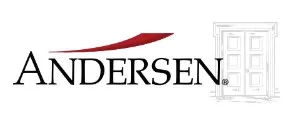- within International Law topic(s)
- in United States
- with readers working within the Securities & Investment industries
- within Technology topic(s)
Effective 5 April 2025 (EDT), the US introduced a "Reciprocal Tariffs" framework, imposing a 10% baseline tariff on most imported goods. This change affects South African exports to the US, moving away from previous trade preferences in some cases. Whilst certain goods like steel and aluminium already face higher tariffs, the new 10% tariff now applies to a broader range of South African products, impacting exporters.
Key changes announced by the US
- A 10% baseline tariff now applies to most goods imported into the US, including those from South Africa.
- Goods already subject to higher tariffs under Section 232 of the Trade Expansion Act of 1962 (e.g., steel, aluminium) are excluded from the 10% tariff.
- These changes are based on a "Reciprocal Tariffs" framework, separate from national security tariffs.
Implications for South African Exporters
- Trade Dynamics: The new tariffs alter the conditions of trade, potentially affecting the competitiveness of South African goods in the US market.
- Pricing and Costs: South African exporters may face pressure to adjust pricing or absorb some of the tariff costs, impacting profitability.
- Sector-Specific Effects: Different sectors in South Africa (e.g., agriculture, manufacturing) will experience varying degrees of impact depending on the specific goods they export to the US.
- Supply Chain Considerations: Businesses may need to review their supply chains and logistics to optimise efficiency and mitigate increased costs.
- Customs Compliance: Accurate customs documentation and classification are crucial for South African exporters to ensure compliance with US import regulations.
Impact on African Growth and Opportunity Act (AGOA), trade benefit?
South Africa currently benefits from the African Growth and Opportunity Act (AGOA). AGOA is a preferential trade program that allows favourable market access to the United Sates market for qualifying sub-Saharan African States.
The introduction of the Reciprocal Tariffs framework now introduces uncertainties on the impact and application of AGOA preferences. If the new tariff structure applies broadly across most imported goods without exclusions the AGOA benefits would in effect be nullified for South African exporters.
Nonetheless, South African exporters should proactively verify the tariff treatment of their specific products under the Harmonized Tariff Schedule of the United States (HTSUS). It is also advisable to conduct impact assessments in anticipation of any potential change in AGOA-related benefits.
Possible actions for South African businesses
- Assess Tariff Impact
Review your export portfolio to the U.S., identify HTSUS codes, and evaluate how tariff changes affect your products and export volumes. - Analyse Financial Implications
Model the potential impact on revenue, profitability, cash flow, and working capital. Review contracts for tariff clauses and clarify liability with U.S. customers. - Evaluate Supply Chain & Optimisation
Identify supply chain vulnerabilities and bottlenecks. Explore strategies such as diversifying sourcing, improving logistics, and optimizing inventory to reduce tariff costs. - Ensure Trade & Customs Compliance
Seek advice on HTSUS classification, tariff mitigation options, and compliance with U.S. trade policies. Stay updated on customs documentation and record-keeping requirements.
How we can assist
Andersen in South Africa's International Tax & Transfer Pricing team, in collaboration with its US and global colleagues, offers comprehensive support to South African businesses on advising and providing guidance on the impact and requirements of the new US tariff regime.
Our global reach and local insight uniquely position us to assess the cross-border implications of these changes, not only in South Africa and sub-Saharan Africa but also within the U.S. market. Thus, able to help businesses understand the real impact of these changes for the continued operations for continued success in the US market.
Here's a more detailed look at how we can assist:
1. Tariff Impact Analysis:
- Product mapping and HTSUS classification to identify applicable tariff rates and quantify impacts on revenue and margins.
- Scenario planning to prepare for potential shifts in U.S. trade policy.
2. Customs Compliance and Valuation:
- Where applicable Secure binding rulings from U.S. Customs and ensure accurate origin and valuation assessments.
- Ensure compliance with U.S. customs paperwork requirements.
3. Supply Chain Optimisation
- Risk assessment to identify vulnerabilities in your supply chain due to tariffs and disruptions.
- Optimise supply routes and evaluate alternative sourcing to reduce tariff exposure.
4. Contract Review & Pricing Strategy
- Contract risk assessment and tariff clauses, to review and amend contracts to address tariff impacts and risk allocation.
- Adjust pricing models to account for tariffs and ensure alignment with updated transfer pricing policies.
5. Monitoring U.S. Trade Policy
- Policy updates and regulatory analysis: on tariff changes and trade negotiations that may impact your business.
As the U.S. tariff adjustments represent a fundamental shift in the trade landscape for South African businesses, Andersen's global reach positions us to provide comprehensive guidance on the implications of the U.S. tariff regime, helping businesses maintain compliance and competitiveness in the US markets.
The content of this article is intended to provide a general guide to the subject matter. Specialist advice should be sought about your specific circumstances.



